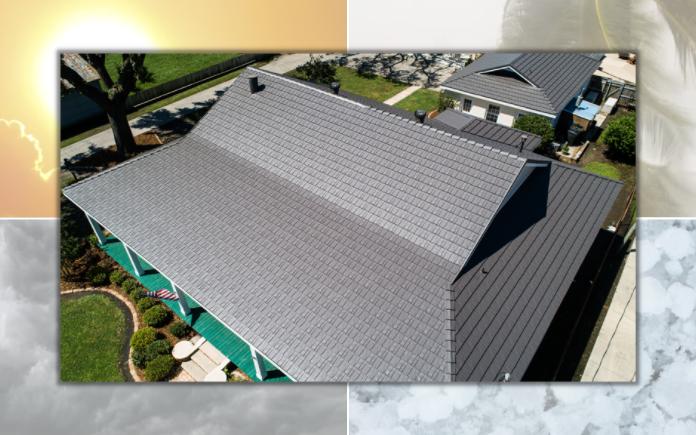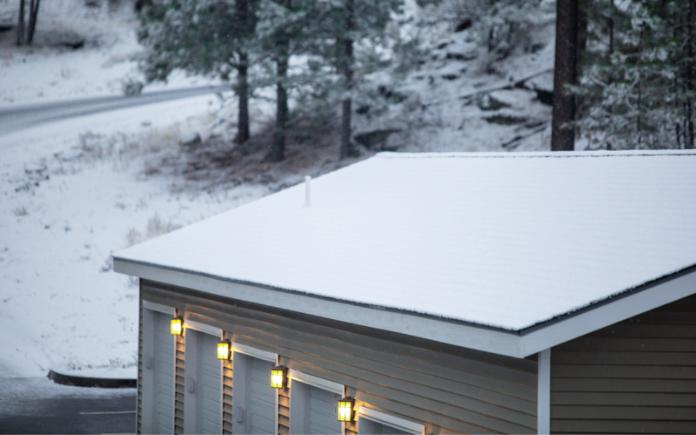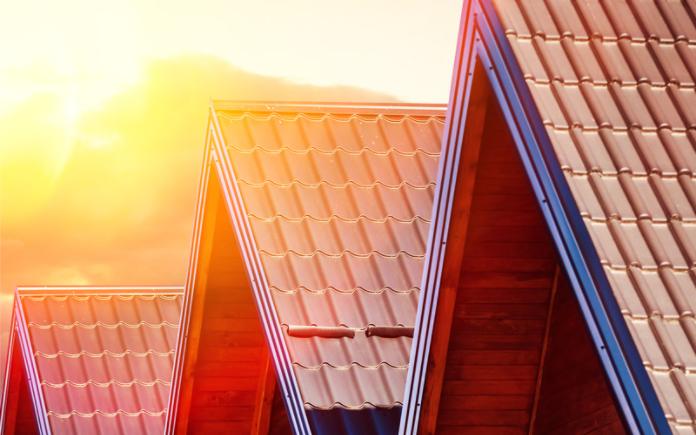[ad_1]

Crazy snow and ice storms, monster hurricanes, golf ball-sized hail, extreme heat and torrential downpours. Homeowners everywhere face unique climate challenges.
In this special Today’s Homeowner podcast, I’m talking with Renee Ramey, Executive Director of the Metal Roofing Alliance. We’re setting the record straight on how metal roofs hold up in extreme weather.

‘Will a Metal Roof Easily Blow Away in High Winds?’
Extreme winds during hurricanes and tornados can literally tear off weaker, sub-quality roofs. Choosing stronger materials like metal roofs can improve the chances of riding out storms unscathed.
Metal roofing can better withstand driving rain and extreme winds including F-2 tornado force winds of up to 140 mph. Since roofs take the brunt of monster storms, an investment in a higher quality roof can help save homes from sustaining major damage and will hold up better over time.
Some metal roofing manufacturers and installers place foam under each shingle, which can help further guard against water seepage.

‘Won’t Hail Damage Metal Roofs More Easily Than Shingle Roofs?’
Quality metal roofs often earn a Class 4 impact-resistance rating — the highest level of protection against hail damage available. That means, installing a metal roof can help reduce hailstorm damage, thus preventing costly repairs and replacement.
All roof types can sustain some cosmetic damage during a hailstorm, but studies show metal roofing performs best and is much less likely to puncture as compared to asphalt.

‘Does Snow Easily Slide Off a Metal Roof?’
Finishes such as stone-coated metal roofs have a rougher surface texture. This works to reduce the danger of rooftop “avalanching” by preventing snow from releasing in large, heavy and damaging sheets.
Smooth metal roofing panels, whether painted or left unfinished, have much slicker surfaces and may require quality snow guards. Snow guards are designed to hold back rooftop snow and allow it to melt more gradually.

Basic, unpainted metal roofs will reflect more solar radiation than asphalt roofs. By choosing the proper colors and coatings, low-glare metal roofs reflect mostly non-visible, infrared and UV rays.
Modern high-performance metal roofing paints and stone-coated materials increase energy efficiency. Plus, darker colors reduce heat gain.
Cool metal roofs offer high solar reflectance and help emit heat gain. This reduces the amount of air conditioning needed by as much as 10-15 percent.
The Environmental Protection Agency estimates that an ENERGY STAR-qualified roof can lower roof temperatures by as much as 50 degrees.
The Metal Roofing Alliance is a nonprofit trade association that helps homeowners make educated roofing decisions and connects them with expert metal roofing professionals.
If you’re ready to upgrade to a metal roof, or just want more questions answered when it comes to a metal roof, check out metalroofing.com.
Further Reading
[ad_2]
Source link